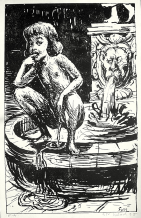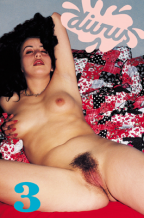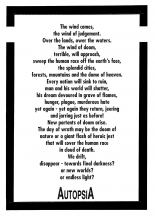| Umělec 2004/1 >> Cape Town Redbull Music Academy | Просмотр всех номеров | ||||||||||||
|
|||||||||||||
Cape Town Redbull Music AcademyUmělec 2004/101.01.2004 BLN | reportage | en cs |
|||||||||||||
|
… is a workshop for DJ’s and producers, a chance to glean new information and make contacts. Participants are chosen on the basis of an extensive questionnaire and a 30-minute mix or a demo of your own production. It can be any style of electronic music. One participant is usually chosen from each country (except for the big ones like USA and UK).
The first RBMA took place in 1999 in Berlin, then in Dublin, New York (changed dates because of Sept. 11), London, Sao Paulo, and at the end of last year Cape Town, South Africa. Cape of Good Dope In the departure hall in the airport I am filled with sadness, thinking about going back home when Krištof Kintera suddenly appears. He’s going to Amsterdam on the same plane to install his moving plastic bag artwork. I cry on his shoulder for a while, as he makes me laugh telling stories about how he had to declare his art, which takes the same batteries as those used for blasting off bombs. Next thing I know we’re sitting on the plane. In the Amsterdam airport we have coffee at an airport bar table under a neon sign reading hihi-hehe-haha. Next to it a neon arrow points the way to the casino. Kintera goes into the city, and the Slovak participant, DJ Monoid, and I set off on our 12-hour journey to Cape Town. We step out of the airport and a gust of hot air makes me take off my jacket. The sun is beating on my sleepy face. I’m in Africa! On the way from the airport we pass slums, the outskirts of the city are just plank houses, tin and cardboard, then the townships (poor suburbs with small concrete houses built in the time of the forced resettlement of blacks from other quarters) and we come into the center. We’re staying in luxurious Waterkant Village, clean, bright colors, with one or two-storey buildings at the foot of Table Mountains. Our house has a terrace with a small swimming pool and right in front of it Rod Stewart gets into his car. Dream factory The Academy is situated in a beautiful space in a former factory in the center of town. In the basement of the main building are a bar, sofas, a few computers, a monitor showing the schedule of the lecture hall and RBMA office. There are seven studios with turntables, nice couches and works by local artists on the first floor. On the next floor there is a lecture hall. Another building houses a recording studio and radio Spectrum with a frequency bought just for the workshop. Everyone introduces themselves and we hear parts of their sets while traveling around on a minibus. I am enraptured by the mountains in Cape Town. Right in the middle of the city — from every window you can see them. Sometimes the sky is clear, sometimes they are lost in clouds. Table Mountains, always in a new remix. After the welcome ceremony and introduction to the academy team we watch a film — Amandla — a documentary about the fight against apartheid. It’s shocking to realize that the absurd regime fell only ten years ago. Music and singing have always been an important part of the life of the original inhabitants, and in the soundtrack we hear compositions by well-known South African musicians Miriam Makeba and Hugh Masekala. During the most powerful scene thousands of people defy the police by singing. Hi, my name’s Andrea and I’m from Jamaika On Monday people sit on the couch, introduce themselves and there’s a drawing in which we ask questions: four Americans, an Austrian, a German girl, a Dutch boy and girl, a Slovenian and a Slovak, a Colombian, a Brazilian and a Mexican, a Belgian, a Frenchman, a Greek, a Panamanian girl, an Estonian, a Croatian, a Persian girl from Sweden, an English girl… some of them study subjects that have nothing in common with music, natural sciences, hormones, human brain; others study at the most prestigious (and expensive) schools for sound engineering in London, one owns a restaurant. Live fast die young in a nice pair of shoe We start at 12, then there’s one hour for lunch, another lecture and a workshop focused on production, then work in the studio, usually till midnight, and then entertainment in the clubs. Students and instructors play alternately. The technical team is Brendan McGillen (Ectomorph/Detroit, USA), Patrick Pulsinger (Cheap Entertainment/Vienna), Osunlade (Yoruba, Puerto Rico/USA) and Marcus Wormstorm (Cape Town/ South Africa). Over the next two weeks we absorb information about production and in workshop groups we make compositions, remixes, etc. We discuss different situations and possibilities: Speedy J and Richie Hawtin create some pieces with the help of a 909 distortion pedal; Matthew Herbert uses the rustling sound of Patrick’s beard in his track; Marcus Wormstorm creates a whole track, including the bass beat, using fingers and soles. The instructors are just as diverse a bunch as the participants, personalities from different fields of the music industry, DJ’s, radio DJ’s, producers, publishers, sound wizards, musicians. They mostly talk about their beginnings, place their development into a wider context, play music demos and answer our questions. Mensch Maschine One of the most interesting instructors is Sebastian Niessen (Munich), not quite the legend that Robert Moog is. The man who created most of the tools used by the legends of Kraftwerk electronic music. He spoke about meeting the pioneers of electronic music instruments: the German Oskar Sala and American Raymond Scott. Sala (1910 – 2002), a student of Hindemith, created unique compositions for an instrument called the Trautonium, invented in 1930 by Friedrich Trautwein. It was a probably the first electronic instrument. Sala connected the electric circuit using a keyboard and activated an oscillator, amplifying the tone and alternating with the help of filters. He became more well known after Alfred Hitchcock asked him to make the music for Birds. Raymond Scott (1908 – 1994) — composer, inventor and visionary — is known first of all as the composer of the infinitely recyclable soundtracks to animated cartoons (e.g. Bugs Bunny). He strongly influenced electronic music, laid the foundations for ambient and techno and his techniques influenced Brian Eno and Philip Glass. In 1949 he invented the Electronium, one of the first synthesizers, but he himself denies this: according to him it was not a real synthesizer, because it had no keyboard. He also invented Karloff, one of the first samplers, other instruments he created in cooperation with Robert Moog, who was 23 at the time, and finally the Videola, a fusion of a keyboard synthesizer and monitor for composing music for films and animation. In the classic dispute “analog versus digital” Niessen clearly preferred analog because music is a thing of feeling, but computers are purely rational. Every time you touch a key, the sound is different, even in the same setting of parameters. If you use analog filters, something happens outside the range of manipulated frequency. On the other hand, the means are not that important — it’s more important to find your own way to get to the sound you want to make. Once upon a time in Chicago Brendan’s encyclopedic knowledge of the development of electronic music is impressive, espe- cially the Detroit scene. From when John Lee Hooker moved in, the mid 1960s, Miles Davis, Motown, racism and the resulting riots of ‘67 when half the city was razed. These musical roots gave rise to another Detroit phenomenon, which has bloomed throughout the rest of the world — techno. In a city where everyone listens to the car radio, this method of broadcasting, which is diametrically opposite from the standard idea of it, had a huge effect. The Wizard or Jeff Mills as one of the first to play his sets on three turntables and other pioneers of techno like Juan Atkins, Derrick May and Kevin Saunderson influenced in their ways EBM, the industrial scene and bands like Throbbing Gristle, Coil, Einstürzende Neubauten and others. The great D‘a’B swindle Tony Colman (London Elektricity, Hospital Records/UK): DJ, producer and label owner, this year received the most awards in the magazine Knowledge, taking home the best label award: Hospital Records; third best album of the year: Billion Dollar Gravy and second-best live act: London Elektricity. It’s a mystery to me The Canadian magician A-Trak whips up a storm. He started playing on turntables at 13 and at 15 he was winning awards (four times DMC world master). The art of the turntable (A-Trak is really a master) is slightly beyond the laws of physics. It’s hip hop and it isn’t, the structure of the classic 4/4 beat is so broken that it’s closer to modern classical music. The scratching speed is comparable to the most mad system techno. Scratch is a symbol, a word. The DJ makes his own sentences with the help of two turntables, a mix and potentially some other tools. He comprises his routines out of these. A-Trak uses a sampler controlled by a pedal (the guitar effect). This student of physics gives the impression of a master of martial arts. He’s calm, funny and unusually smart. Rappers Shaheen and Ready D from Prophets of da City and Roach and Fletcher from African Dope represent the music scene in South Africa. This music publishing house has given itself the task of propagating domestic music across genres. It has produced albums by South African projects and artists such as Felix Laband, Mood Phase, Calahari Surfers (the project emerged during apartheid, and at that time they sampled the voice of George Bush and the speeches of politicians and their albums were banned), Godessa (a beautiful rapping girl), a project by Krushed and Sorted, a compilation of African Dope and Cape of Good Dope and many others. Apart from their production activity they have also organized many interesting cultural actions, e.g. the popular club night African Dope Soundsystem and performances arising from a combination of electronic music and theater. Insect play Mira Calix, originally from South Africa who went to London to realize her electronic dream, created a more experimental setting. She works with found sounds, some of her compositions are made up entirely of insect recordings. She puts out music on the label Warp and she conducted the London Symphonic Orchestra in representing Warp in Royal Festival Hall. The orchestra made insect noises with their instruments, and on huge screens measuring 10 x 15 meters the inhabitants of the insect realm were projected. Her music is not pop, but Mira believes that it is necessary to always be one step ahea, and prepare the listeners for the future. Among other lecturers are people whose development ranges from classical music preparation and acoustic instruments to electronics, like Osunlade or Sal Principato from NYC (the band Liquid Liquid), Amp Fidler (Ampadelic, Detroit/USA), a musician who played with George Clinton in Parliament and Funkadelic, worked with Carl Craig and Moodyman. There is also Erlend Oye, half of the Norwegian project Kings of Convenience, the voice in some compositions by Royksopp, Prince Paul and others. That day I go visit Roach and Fletcher in the offices of African Dope. There must be some connection between Prague and Cape Town. Moodphase5 and Krushed and Sorted have performed in the Czech Republic, and what they do addresses people directly. We get into complicated discussions about analogies. In the end they gave me one of their most beautiful pieces, Felix Laband — 4/4 down the stairs, and The Constructus corporation presents Ziggurat, a book of handwritten texts with a superbly animated comic and CD. In the evening I go to the club Lounge, Jay da Flex is playing and next week I’ll play there. I walk down the hill, past Bronx, a packed gay club, and soon I am out walking down Long, a street jammed with clubs (Marvel, Jo Burg, Upstairs, etc.). It’s no problem to hit many in one evening. The next day I decide to walk past the street vendors and their wares: lamp shades in the form of many-point stars made from wire and paper, wire and bead lizards, incredible sculptures made from cut beer or coke cans. Raw kiss It rains for the first and last time in the two weeks of my stay. This week I have a presentation on the radio, the first in a drum and bass program on Radio Bush, where I play with the German participant and two local DJ’s. I talk to Stuart, a local d‘a’b DJ and producer, promoter and creator of the server www.thebreakdown.co.za. who edits for the academy the many videos made daily about the brilliant strategy of the sponsor. The money goes towards various events. The Academy invites real personalities and is closely observed by the media. Within a month there are crews from MTV and other music channels, journalists from all the big music magazines. Thanks to the permanent presence of the media the whole action creates the impression of a reality show. Big Brother checks out our sneakers’ brand name. Questionnaires everywhere, we get one by mail during our stay. The next day there is a two-hour back-to-back with a local DJ on Radio Spectrum and I play at Lounge. Friday, the last day of the Academy: in the yard I can smell the barbecue, at the turntables DJs take turns, everyone exchanges addresses. Last rays of the African sun. A clear sky, colors I never knew before. When I close my eyes, I can see the Table Mountains, wire lizards, the southern tip of Africa, where two oceans meet. I fly away in the middle of a hot summer and land back in snowy Prague.
01.01.2004
Рекомендуемые статьи
|
|||||||||||||
|
04.02.2020 10:17
Letošní 50. ročník Art Basel přilákal celkem 93 000 návštěvníků a sběratelů z 80 zemí světa. 290 prémiových galerií představilo umělecká díla od počátku 20. století až po současnost. Hlavní sektor přehlídky, tradičně v prvním patře výstavního prostoru, představil 232 předních galerií z celého světa nabízející umění nejvyšší kvality. Veletrh ukázal vzestupný trend prodeje prostřednictvím galerií jak soukromým sbírkám, tak i institucím. Kromě hlavního veletrhu stály za návštěvu i ty přidružené: Volta, Liste a Photo Basel, k tomu doprovodné programy a výstavy v místních institucích, které kvalitou daleko přesahují hranice města tj. Kunsthalle Basel, Kunstmuseum, Tinguely muzeum nebo Fondation Beyeler.
|







































 We Are Rising National Gallery For You! Go to Kyjov by Krásná Lípa no.37.
We Are Rising National Gallery For You! Go to Kyjov by Krásná Lípa no.37.
Комментарии
Статья не была прокомментированаДобавить новый комментарий